- Home
- Bret Easton Ellis
White Page 2
White Read online
Page 2
This laissez-faire attitude about content wouldn’t be acceptable for most parents today, but it wasn’t unusual to be eleven or twelve in the summer of 1976 and to sit through multiple viewings of The Omen in a massive theater on a giant screen (brought in by various friends’ older siblings because of the R rating and delighted by the slo-mo beheading of David Warner) or to listen to the original cast recording of A Chorus Line on 8-track at the same age while being driven somewhere. My sisters and I giggled at “Dance: Ten; Looks: Three” (“Tits and ass / bought myself a fancy pair / tightened up the derriere”) while our parents sat in the front of the car—my father at the wheel, my mom in the passenger seat—both distracted and nonplussed. We flipped through the Jacqueline Susann and Harold Robbins hardbacks in my grandmother’s bookshelf and watched The Exorcist on the Z Channel (the country’s first pay-cable network that premiered in LA in the mid-’70s) after our parents sternly told us not to watch it, but of course we did anyway and got properly freaked out. We saw skits about people doing cocaine on Saturday Night Live, and we were drawn to the allure of disco culture and unironic horror movies. We consumed all of this and none of it ever triggered us—we were never wounded because the darkness and the bad mood of the era was everywhere, and when pessimism was the national language, a badge of hipness and cool. Everything was a scam and everybody was corrupt and we were all being raised on a diet of grit. One could argue that this fucked us all up, or maybe, from another angle, it made us stronger. Looking back almost forty years later, it probably made each of us less of a wuss. Yes, we were sixth and seventh graders dealing with a society where no parental filters existed. Tube8.com was not within our reach, fisting videos were not available on our phones, nor were Fifty Shades of Grey or gangster rap or violent video games, and terrorism hadn’t yet reached our shores, but we were children wandering through a world made almost solely for adults. No one cared what we watched or didn’t, how we felt or what we wanted, and we hadn’t yet become enthralled by the cult of victimization. It was, by comparison to what’s now acceptable when children are coddled into helplessness, an age of innocence.
* * *
…
During those years, I spent an inordinate amount of time staring at a movie screen in the darkness of a theater, and so much of it was filled with blood-soaked and realistic and intimate death. Compare and contrast to the bloodless massacres of Marvel films today—what was then PG would probably now be restricted. In one year alone in the mid-’70s I remember witnessing the following: Jill Clayburgh was stabbed to death by George Segal in The Terminal Man, a Michael Crichton adaptation that gripped me for a few viewings but now seems unwatchable; Yul Brynner hunted down Richard Benjamin and James Brolin in Westworld, the shootings filled with the bright red splatter that flowed across screens in buckets through the middle of the decade; the blood pouring from Donald Sutherland’s chopped-open throat at the end of Don’t Look Now was the same awful color. There was Pamela Franklin being sexually taunted and then killed by the spirits of The Legend of Hell House. There was Vincent Price as the deranged actor Edward Lionheart murdering his critics in Theatre of Blood, which was one of the more vicious and imaginatively bloody movies I’d ever seen up to that moment. I was nine when my father took me and a friend to an early matinee at the grand art-deco Village Theater in Westwood, a showing that was fairly empty because it was only late morning, and we survived the ordeal, my friend and I delighted by the gory and hideous Shakespearean deaths (including the decapitation of two poodles their owner is forced to consume until he chokes to death). For my father, the movie played as a comedy, which it was, if not for a third grader. He was thirty-two then and not a horror fan, and I think the only reason he decided to chaperone us that April morning was because he had a crush on Diana Rigg, who it turned out was playing Vincent Price’s daughter.
I distinctly remember a December afternoon in 1974 when school was out for the holidays and I walked to a theater near our house in Sherman Oaks, the La Reina on Ventura Boulevard, where I watched a matinee of Brian De Palma’s Phantom of the Paradise and promptly had my young mind blown. At the age of ten I became obsessed by this movie much like I suppose today’s pre-millennial generation admires another musical, Frozen—but Phantom of the Paradise was a flop that no one I knew ever saw, and I would not find any fans of the movie until going to college. (I’d seen it at ten because Pauline Kael, whom I read religiously, had given it a rave in The New Yorker.) In this day and in this age, and with many of my friends being parents, I’m somewhat amazed that I (and my mother) felt no trepidation about me walking the streets by myself, going to a theater by myself, buying some candy by myself and choosing my seat in some vast and empty auditorium, unaccompanied by any adult, and then proceeding to watch a pretty bloody and sexy movie. Instead, I was thrilled that I was allowed access to this and felt remarkably grown-up, because I didn’t need to have a parent holding my hand and horror films were aiding these attempts at independence. If I could survive Children Shouldn’t Play with Dead Things in a Northridge multiplex with my friend Robert Scarf, or deal with Dirk Benedict’s hideous transformation from hot-looking college student to mutated king cobra in Sssssss alone in a theater in North Hollywood, or deal with any of the five stories that made up Tales from the Crypt, then I felt myself becoming stronger, rising toward something. I was confronting the adult world on my own, by myself, and wrestling with it. There were no adults to answer to, no cell phone they could track me with, I was just alone for three hours on a December afternoon, watching a sophisticated rock-horror musical with some bloody and outrageously satiric scenes and a great set of songs by Paul Williams, and yes, I was ten when this happened. I walked by myself to a Brian De Palma movie and loved it and felt like I was, in the midst of it all, growing up.
* * *
…
Not winning but disappointment, disillusionment and pain made joy, happiness, awareness and success both tangible and noticeably more intense, I realized at an early age. We didn’t get ribbons for doing a good job and we weren’t awarded for just showing up: there were actual winners and losers. School shootings didn’t yet exist—at least they weren’t epidemic—but we were physically bullied, generally by older kids and usually without parental commiseration or even comment. And we definitely weren’t told how special we were at every opportunity. (Yet I can’t remember hearing about a single peer’s suicide during my childhood and adolescence—either nationally or within the LA private-school system.) It was the out-of-control defiance of horror movies that made this seem like how the world actually works: you win some, you lose some, this is life, this is all preparing me for something, this is normal. These movies reflected the overall disappointment of adulthood and life itself—disappointments I had already witnessed in my parents’ failing marriage, my father’s alcoholism and my own youthful unhappiness and alienation, which I dealt with and kept processing on my own. The horror movies made in the ’70s didn’t have rules and often lacked the reassuring backstory that explained the evil away or turned it into a postmodern meta-joke. Why did the killer stalk the sorority girls in Black Christmas? Why was Regan possessed in The Exorcist? Why was the shark cruising around Amity? Where did Carrie White’s powers come from? There were no answers, just as there were no concrete connect-the-dot justifications of daily life’s randomness: shit happens, deal with it, stop whining, take your medicine, grow the fuck up. If I often wished the world were a different place, I also knew—and horror movies helped reinforce this—that it never would be, a realization that in turn led me to a mode of acceptance. Horror smoothed the transition from the supposed innocence of childhood to the unsurprising disillusionment of adulthood, and it also served to refine my sense of irony.
* * *
…
In the summer of 1982, the horror movie I saw right before leaving LA at eighteen to go to college and officially begin my adult life was, tellingly enough, the last one that truly caught me u
p emotionally, at the time even traumatizing me, disturbing me for years afterward. A group of us went to see John Carpenter’s The Thing at the Crest Theater in Westwood, having gone the night before to the week’s other big opening, Ridley Scott’s Blade Runner at the Bruin Theater, also in Westwood. (Ultimately, we preferred Carpenter’s movie.) The Thing takes place in the Antarctic at an American research station, where a group of scientists comes across an alien life form that assimilates and then imitates other organisms. The Thing went further than just about any horror movie I’d seen, exploding the body-horror conventions that seemingly had begun with early David Cronenberg and then reached the mainstream with Ridley Scott’s Alien. And while Alien is a smoother, more luxurious nightmare—as well as a truly frightening movie—it ends reassuringly, with the monster dead and Ripley and the cat she saved returning safely to earth. The Thing offered no such comfort. Aside from the chest-bursting scene, there’s actually very little gore in Alien, and what’s left is played out in discrete, almost subliminal shock cuts. (Think of how the deaths of Harry Dean Stanton and Yaphet Kotto are shown in tight close-ups.) The Thing reverses this aesthetic and doesn’t shy away from horror by often relying on extended medium shots and masters where the gruesome assimilations occur, and this presentation so unnerved me—was so bloody, grotesque and absurdist—that I felt I’d finally come to the end of this road. Horror movies just weren’t going to affect me in that primitive way anymore. I didn’t know it then, that night in the summer of 1982—this realization actually occurred a few months later—but I had become an adult, and I didn’t need horror movies the way I once had.
When I came back to Los Angeles that Thanksgiving for a few days, after the shock and delight of being an autonomous freshman at a college far away in the hills of southwestern Vermont for three months, I saw Creepshow, a George Romero and Stephen King collaboration, at the same theater where I’d seen Theatre of Blood with my friend and my father almost a decade earlier, and I just shrugged at it. I had already completed my education.
a c t i n g
In February 1980, when I was fifteen, I saw Paul Schrader’s American Gigolo at the National Theatre in Westwood and had no idea the movie was influenced by Robert Bresson, the French minimalist filmmaker, or that the ending—a fake alibi one character offers another—was lifted from Bresson’s film Pickpocket. (In 2012 when I was writing the screenplay for Schrader’s The Canyons, my penultimate scene involved a version of that alibi between Lindsay Lohan and James Deen, an updated riff on Pickpocket’s final moment, but Gigolo was my model there, not Bresson.) Looking back, the impact American Gigolo had on me is impossible to tally, and it’s not as if this is a great film—it’s not, and even its director agrees—but in the way it changed how we look at and objectify men, and altered how I thought about and experienced LA, its influence is vast and undeniable. The film is set in 1979 Los Angeles, whose denizens dine at Ma Maison and Perino’s and Scandia and Le Dome—and Julian Kay, the title character, is living in a chic Westwood apartment, adorned in Armani, driving the empty streets in a Mercedes convertible and making his living as a male prostitute for wealthy older women while haunting the Polo Lounge in the Beverly Hills Hotel, and he is extraordinarily beautiful—the movie captures Richard Gere at the height of his beauty, when he was thirty but looks younger. Julian has two pimps who supply him with work: one is a blond woman, a divorcée who lives in Malibu, played by Nina Van Pallandt, and the other is a big, bad black man played by Bill Duke, who lives on the West Side in a high-rise festooned with Warhol prints. We’re not sure if the woman knows about the other pimp—maybe this matters at first, maybe it doesn’t, but what does matter is that Julian is a happy, superficial capitalist with very little backstory. He just exists, floating through this world, an actor. He tells someone at one point that he was born in Torino, but we don’t know if this is true because in the previous scene he lied to a client about being a pool boy at the Beverly Hills Hotel in his youth. The engine of the plot kicks in when Julian is framed for a murder, and American Gigolo becomes a crime thriller. Narratively, it’s somewhat standard, and its resolution is clean and simple. But none of that matters because the movie’s design is so seductive and stunning.
American Gigolo was Paul Schrader’s third movie as a young director and everything he learned on his first two pays off here: the gliding camera movements, the gorgeous sets, the dramatic lighting—all aiding in the creation of his acid vision of Los Angeles as a brightly colored wasteland. This is a sunlit neo-noir, ominous and beautiful, and it was of its moment: there was something late-’70s New Wave about it, minimal and chic, lush and corrosive, and there was something gay about it as well, which then seemed everywhere in the culture. Mainstream audiences had never seen a man photographed—objectified—the way Richard Gere was. The camera ogled his beauty, roamed over his skin, devoured his adolescent petulance, was hypnotized by his flesh, and Gere was the first leading man in a big studio movie to go full frontal. Originally, John Travolta was going to star in American Gigolo but walked away just weeks before production, and an audience might have rooted for Travolta’s earnestness more than Gere’s blankness; Travolta might have humanized the movie—instinctively brought humor to it—and would have given it a realism. But with Gere at its center, the movie is a chilly and remote experience, and at this point in his career humor eludes him. There’s a sadness to Gere, yet this doesn’t erase the notion that Julian Kay is less a character than an idea, an abstraction, an actor, and he’s certainly not likable.
And yet Gere’s blankness and the movie’s austerity collided, and audiences went with it in the spring of 1980 and made him a star. The model Lauren Hutton plays Michelle, the unhappy wife of a California senator, and she’s quite stunning as well, but the movie loves its leading man—the tension comes from Gere’s beauty and narcissism. Women had always been photographed like this, but men hadn’t—it was new, it was gay, it ended up influencing everything from the popularity of GQ magazine to how Calvin Klein began advertising men. In retrospect, it’s amazing that American Gigolo was a hit: the film is deliberately paced, sometimes glacially so, and flirts with pretension more often than it doesn’t, so it’s hard to believe this art object with very few commercial concessions (except, of course, that delirious come-on of a title) was in fact a big Paramount picture produced by Jerry Bruckheimer.
* * *
…
In 1980 I was beginning the Less Than Zero project which would culminate in 1985 with my first novel’s publication, and though I took many of my cues from Joan Didion and LA noir, along with bands like the Doors and X and the Eagles, American Gigolo was another key template so much so that I named the male teenage prostitute Julian as well. What I responded to at fifteen was the moral ambiguity of not only the subject matter, and of Julian Kay himself, but also the filmmaking: I couldn’t make up my mind about what the movie was selling me—and I liked that. Blondie’s electrifying “Call Me” burst over the opening credits like an anthem, though the movie was basically dark and pessimistic with Richard Gere’s beauty offered as something to crave, while at the same time something deeply ambiguous. That fall, Robert Redford’s Ordinary People spoke most passionately to my sixteen-year-old self, with Timothy Hutton as the movie character I most identified with, but now I can barely watch it. For all its flaws, I can watch American Gigolo endlessly. It came out when films could have a kind of far-ranging cultural influence, just as novels could, and both movies and novels now look like art forms of the twentieth century, not the twenty-first. Movies no longer work for us as an exploration of unseen, faraway cultures, unless they’re otherworldly and fantastical. We’re no longer impelled to go to a theater simply to see Richard Gere standing naked in his Westwood apartment, maneuvering through the gay men dancing at the Probe on North Highland Avenue or just hanging out on sunlit Rodeo Drive—to live as voyeurs of the wealthy world of Beverly Hills in which American Gigolo takes place. All this is over:
reality TV and Instagram have replaced it.
* * *
…
Julian Kay is an actor—and Gere’s performance is a performance of a performance. American Gigolo’s narrative trajectory is that of a performer who needs to become real and get off the stage in order to save himself. Of course, this is the standard loss-of-innocence arc that’s found in most American movies, except here it’s more interesting and literally superficial than usual, as is the actor’s performance. I’d become aware of Gere a few years before while watching the Z Channel in my Sherman Oaks bedroom and saw him costarring in the overwrought 1977 adaptation of Judith Rossner’s 1975 best seller, Looking for Mr. Goodbar. (I read my mom’s copy of the novel when I was eleven.) About forty-five minutes into the movie he appears as Tony, one of Diane Keaton’s pickups. She first notices him at a singles bar because he’s about to steal a wallet out of someone’s purse—but why wouldn’t she notice him anyway? He’s beautiful. In the following scene Gere brings Keaton to orgasm in her apartment while Donna Summer sings “Could It Be Magic” and then performs a balletic mock-rumble kung-fu dance in his jockstrap while brandishing a glow-in-the-dark switchblade. All of this was electrifyingly sexy to my eighth-grade sensibility (it’s ludicrous now) and in an erotic trance I began following Gere’s career through 1978 (Days of Heaven, Bloodbrothers) and into 1979 (Yanks), developing a full-blown teenage fixation. It could have been anyone, I guess, but the timing of my adolescence and of these movies made for another collision.

 Imperial Bedrooms
Imperial Bedrooms American Psycho
American Psycho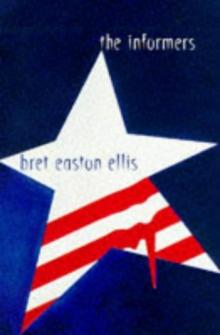 The Informers
The Informers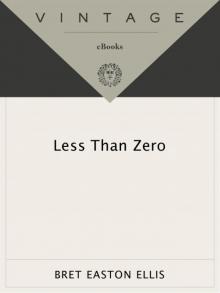 Less Than Zero
Less Than Zero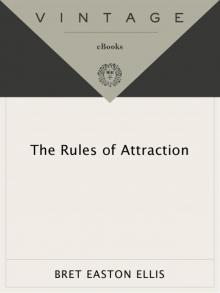 The Rules of Attraction
The Rules of Attraction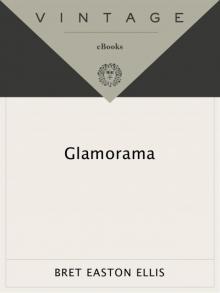 Glamorama
Glamorama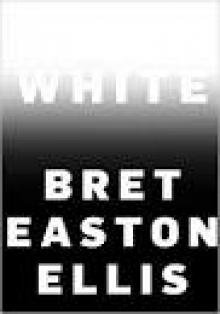 White
White